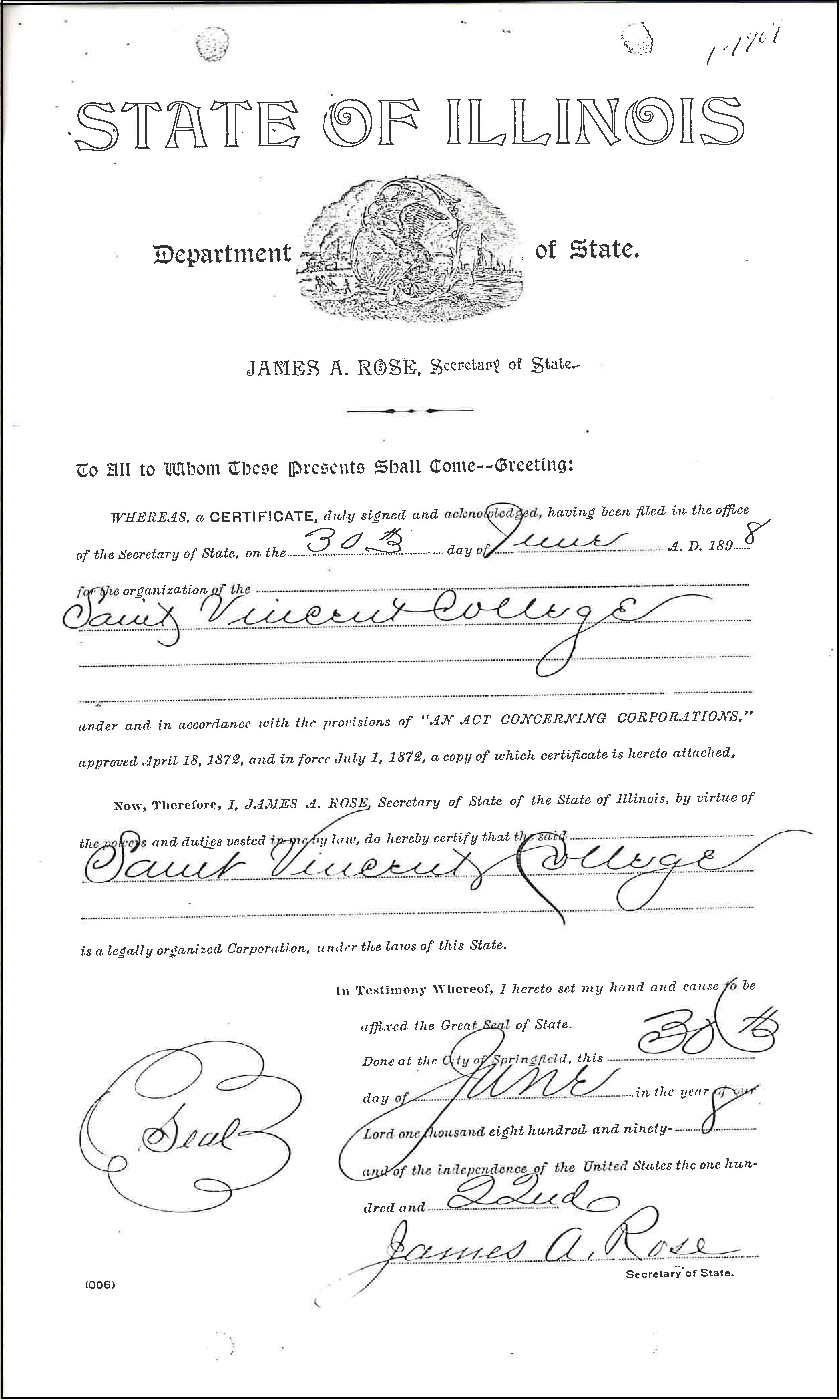On the morning of Sept. 5, 1898, 10 faculty members and roughly 70 students walked into St. Vincent’s College Hall to begin classes for the first time. Now 120 years later, DePaul University still stands as a center for a uniquely urban, Vincentian education. However, the road to this long-standing success was far from easy, and was more than 20 years in the making.
In 1874, Bishop Thomas Foley was the first person to suggest the Vincentians establish themselves in Chicago. The following year, Western Province provincial James Rolando, C.M., sent the Rev. Edward M. Smith, C.M., to establish a Vincentian parish and school on the north side. Fr. Smith arrived in August 1875 and began living in and working out of a local hospital. Despite the tight quarters, Fr. Smith managed to build a congregation of 75 people and soon decided that it was time to purchase land on which to build a church. He chose a five-acre plot on the northeastern corner of Webster and Osgood, now Kenmore, a plot of land that would come to be known affectionately as “Father Smith’s Farm.” St. Vincent de Paul Church was quickly constructed and the parish grew rapidly. The parish’s success led to the establishment of an elementary school in 1883, operated by the Sisters of Charity of the Blessed Virgin Mary and welcoming 253 students in its first year.
 St. Vincent’s College had a charter from the state of Illinois by June of 1898. (DePaul University/Special Collections and Archives)
St. Vincent’s College had a charter from the state of Illinois by June of 1898. (DePaul University/Special Collections and Archives)
Due to a massive influx of European immigrants, the Catholic population in Chicago had exploded over the previous 20 years, and Chicago’s first archbishop, the Most Rev. Patrick A. Feehan, had spent much of his tenure pushing for the founding of new Catholic parishes and schools. By the 1890s, he recognized that Chicago’s north side was in desperate need of a Catholic secondary school and college. At a meeting in November 1897, Bishop Feehan spoke to the provincial of the Western Province, the Rev. Thomas J. Smith, C.M., about establishing a Vincentian academy and college for boys.
By this time, St. Vincent de Paul Church had long outgrown its first building and construction on a new church had been completed in 1895. Thus, the old church building was to be renamed St. Vincent’s College Hall and to become the home of the new school. A third floor was added to the building, to be used as a gymnasium, while the lower floors were converted into classrooms and offices. From this point, progress on the new school was rapid and St. Vincent’s College had a charter from the state of Illinois by June of 1898. Back at the Vincentian seminary in Perryville, Missouri, priests and seminary students were quickly chosen to be sent to Chicago to teach at the new school. They departed for Chicago on either Aug. 21 or 22, 1898, stopping in St. Louis for a midday meal and not arriving in Chicago until the following morning. The newly arrived faculty quickly got to work with building the school’s curriculum and classes – after all, they had less than two weeks until classes opened.
Led by the Prefect of Studies, the Rev. Thomas Finney, C.M., the St. Vincent’s College faculty set to work designing the curriculum. The course catalog for the inaugural school year shows two curriculum tracks: the “Classical” and the “Commercial.” Both the Classical Course and the Commercial Course required basic subjects such as English, mathematics, and history, and students of both courses took classes in these subjects together. Once these courses were complete, the tracks diverged. The Classical Course was a seven-year track, with three years in the “Academic” department in secondary school, followed by four years in the “College.” This track was the standard liberal arts education of the time and focused on classes in philosophy, Latin and Greek. Graduates of this track received an A.B. degree. The Commercial Course, meanwhile, was a four-year track that focused on business skills such as bookkeeping, shorthand, and typewriting. These four years of study culminated in a Commercial Diploma. The Rev. Daniel J. McHugh, one of the first instructors at St. Vincent’s and, later on, DePaul’s archivist, simplified this distinction in one of his many histories, explaining that at the end of four years, the Commercial student was “parallel in many respects with the freshman student of the Liberal Arts program.”
In the 1935 “DePaul University News” article “The Background and First Year,” Fr. McHugh wrote, “It is hard for the student of these days to imagine how things were in the beginning.”
In some respects, he was certainly correct. Many faculty of today would not relish the idea of planning curriculums and courses for two programs in less than two weeks. For most students, the idea of having only two seniors in the college graduating class -- William D. O’Brien and Mark Sheridan, who received their A.B. degrees in June of 1899 -- would be very unusual. While different in appearance, however, the St. Vincent’s College of 1898 and DePaul University of 2018 are perhaps similar in spirit. Like those early Vincentians, the DePaul of today is dedicated to giving students a thorough and diverse education that will enable them to succeed in the world.